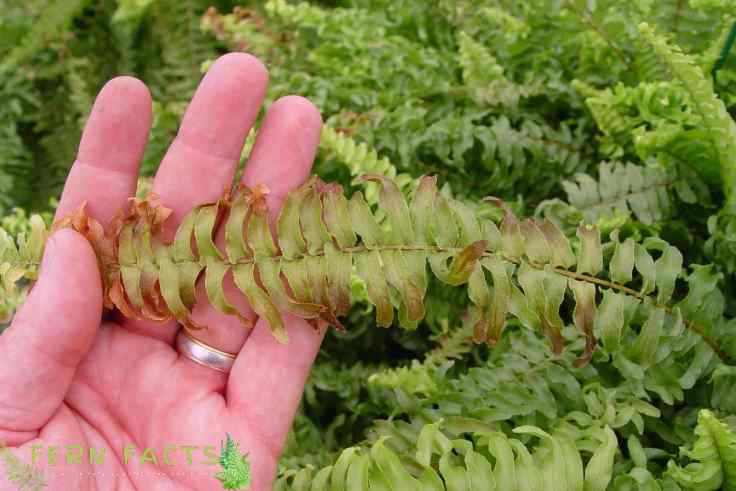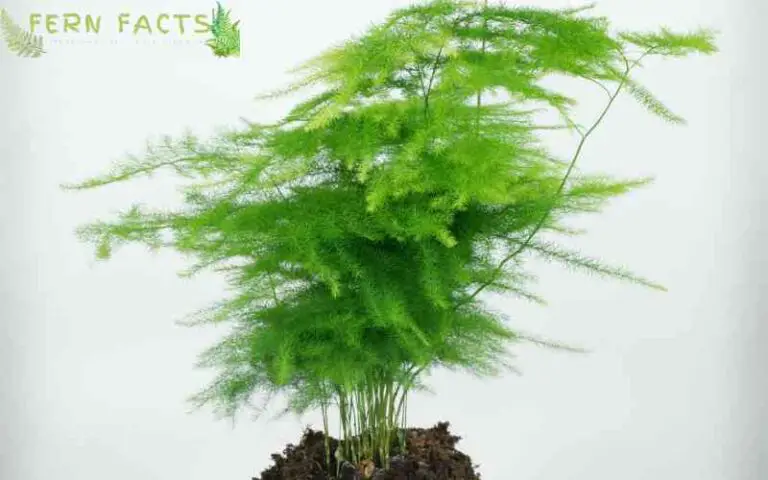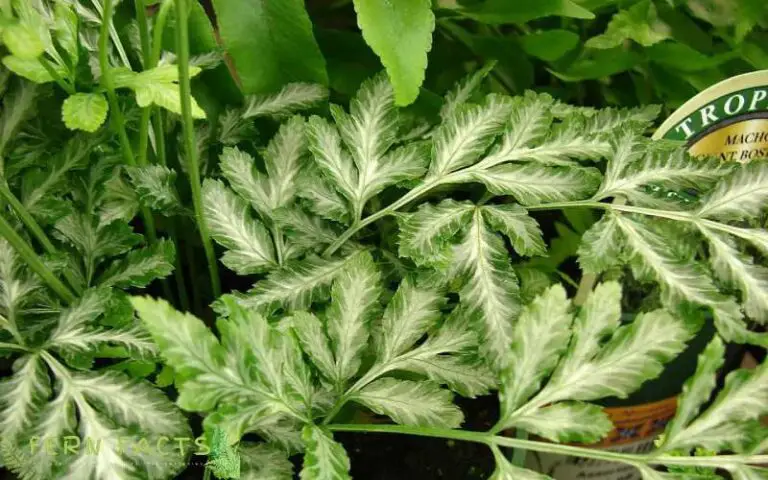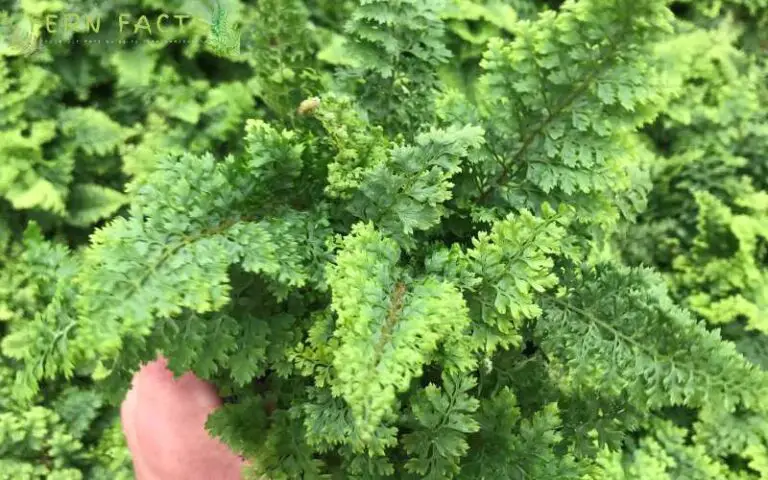Boston Fern Diseases: Caring for Unhealthy Boston Ferns
Do you have unhealthy Boston ferns? Do your Boston ferns have white insects or fungi on the fronds? Don’t know what to do! Then read this article, and you might get all your answers.
In this article, I’ll give you an idea about pests, insects, and diseases of Boston ferns. Besides, I’ll provide guidance so that you can treat and care for your unhealthy Boston ferns.
Lastly, I’ll conclude the article by giving you overall care and maintenance tips for Boston ferns so that you can have healthy growing ferns at home easily.
Overview of Boston Ferns
- Botanical name: Nephrolepis exaltata
- Common names: sword fern, bluebell Fern, tuber ladder Fern, Fishbone Fern
- Plants: Evergreen
- Native range: America
- Native habitats: moist shady locations like humid forests, swamps, and floodplains
- Shade requirements: partial shade or full shade
- Height: 20 to 98 inches
- Soil pH: acidic soil (6.0 to 6.5),
- Soil type: moist well-drained, drought-tolerant
Boston Ferns are perennial evergreen ferns that are widely native to America. These ferns are also recognized as sword fern or blue bell Fern, tuber ladder Fern, or fishbone Fern in many local regions.
Their average height is around 40 to 60 centimeters however, in rare conditions, they can exceed up to 1.5 meters also. Likewise other ferns, Boston ferns are also fond of moist shady places just like their natural habitats.
Nonetheless, they can tolerate drought but not for too long. They need 70 to 80% humidity around themselves for their flourishing growth.
Boston Fern’s Pest and Diseases Problems
Let’s go through some common pests and diseases of Boston fern that you might face while growing them as houseplants.
So if you notice any kind of diseases and pests described below, then immediately you need to take action.
Pests and Insects
Generally, Boston ferns are very prone to mealybugs, scales, snails and slugs. These pests and insects severely affected Boston fern’s healthy growth.
1. Mealy Bugs
Mealybugs are small white insects or swarms that have foliage veins. These small white bugs roam around on the Boston fern stem or fronds and suck out the hydration that causes the fronds to look black but it’s revivable.
Afterwards, they tend to leave a white waxy powdery substance which attracts ants as well. Hence, because of these Mealybugs Boston ferns tend to have yellow, brown, and wilt fronds.
2. Scales
Scales are another common pests or insects that affect Boston ferns. These tiny scales tend to have white gray or tan shells with their rigid body.
Usually, the scales don’t move around much so it’s very hard to spot them. Sometimes, you might mistake them for spores.
But these scales usually sit in the fronds and suck the moisture or tenderness from the foliage; it also makes your Boston fern dull and brown gradually.
As a result, fronds will be deformed and discolored over time.
3. Snails and Slugs
Snails and slugs are Amos’ common pests or insects for Boston ferns. Mostly, if your plant grows outside, there is more chance of getting affected by these snails and slugs.
These insects lay their eggs on their fronds and eat the fronds as well. Usually, they keep themselves hidden during the daytime.
They don’t like hot afternoon sunlight so they hid themselves in that time. So you may not spot them in the daylight. You might have to catch or remove them during the nighttime.
Blight
Blight is a fungal or bacterial pathogens that attack the plant’s vascular systems and lead to the tissue of the plant’s death.
If the plants are affected in a large area then it’s known as blight. Blight can severely weaken the plants which ultimately kills the plants gradually if they are not treated immediately.
Boston fern’s blight disease is also caused by fungi. If you observe brown dark spots on their foliage, and roots then certainly your plants are affected by blight disease.
Pythium Root Rot
Root rots are another common issue for Boston ferns. It’s also known as Pythium root rot.
If you are watering improperly, then your Boston fern roots will be affected by fungi.
Those fungi will cause root disease in their roots.
Treating Your Unhealthy Boston Ferns
Well, if you notice any kind of symptoms in your Boston plants, then you need to take initiative before you lose your plant for good.
Isolate the Infected Plants
At the very first, you need to isolate your Boston ferns from your other garden plants. Because your unhealthy plant might affect other healthy plants in your garden.
So immediately isolate or separate them from other plants.
Pruning the Plant
Then, prune the damaged dead fronds immediately so that it cannot affect other fronds of the plant.
However, don’t cut very deep or don’t cut off their roots; it can kill the plant. Try to cut at least 25 to 30%, not more than that.
Washes Away With Water
After pruning, just wash away your plant with water so that any extra insects or pests get washed away from the water.
It will lessen your work a little bit. Just wash the plant several times to ensure all the dirt and insects are removed properly.
Apply Insecticidal Soap
To treat your unhealthy Boston ferns, you can use insecticidal soaps. These soaps are common insecticides and are very effective for treating Boston ferns.
This soap is made from potassium, salts, and oils which will help to kill those insect bodies on the plants. Alternatively, you can also use dish soap as a great substitute however it’s not as effective as insecticidal soap.
Just use insecticidal soaps with 4 to 5 cups of water along with 1 spoonful of liquid soap. Apply insecticidal soap once a week and remain consistent with your treatment.
Otherwise, you cannot fully cure your plant.
Apply Pesticides
Moreover, you can also use pesticides to kill those insects and pests from your Boston plants. However, ensure that you utilize the pesticides by following all the guidelines.
These pesticides disable or numb pests and kill them gradually. However, it can affect humans and animals if it is somehow misused.
It is also very harmful to the human eye, so make a decent distance while you are spraying on your plant.
Use Neem Oils
Neem oils are also another great solution to terminate those pests and insects. It’s one of the organic solutions that people have been following for a long time.
Use 1 bottle of water, 1 tablespoon of liquid soap, and 1 tablespoon of neem oil. Mix it well and spray it on your unhealthy plant.
Neem oils suffocate insects such as mealybugs and scales with their fragrance. Also, it affects insects’ normal functioning and eventually kills the pests.
Apply Fungicides
If your plant is affected by fungus diseases, then you have to use fungicides on your plants. Similarly, you can also buy pathogens-free plants that don’t get affected by fungi much.
Repotting Your Boston Fern
To get rid of rotten roots, you need to repot your plant. First use fungicides to treat any other fungi diseases or blight.
Then simply mix a well-draining soil with other organic compost like peat moss, perlite, and vermiculite by maintaining the pH level between 6.0 to 6.5. Then take a bigger container or pot and repot your Boston ferns with new potting soil.
Make sure, you don’t take any infected part of that plant because it can again affect your plant’s health.
Identify the problem and treat your plant with the specific remedies that have been mentioned above in this article to cure your unhealthy Boston ferns.
General Care and Guidance for Healthy Boston Ferns
Well, growing Boston fern would be fun and exciting until you need to take some extra care for your unhealthy plant. If you already give them their ideal condition, then your plant can have a thriving life.
- Give them indirect, shaded places to thrive. Indirect light like an east-facing window would be ideal for your plants. excessive sun rays or too dark and shady places both can harm your plant. So try to give them an indirect dappled place to grow.
- Boston ferns like moist soil conditions. They don’t like standing water or a soggy situation. So water your Boston ferns once a week during the growing season. Similarly, water them once every 15 days during winter days since Boston ferns don’t require much hydration at that time.
- These ferns also prefer a humid atmosphere with a minimum of 80% humidity. So basically, these ferns enjoy a humid atmosphere. Therefore, try to place them in humid places in your houses like bathrooms or kitchens. Conversely, you can also use a humidifier or pebble tray to increase the humidity around your plants. You can also mist your plant.
- Boston ferns prefer moist soil with a good drainage system. Although they can tolerate drought conditions, they still need hydration and moisture in their soil. Hence, use a humus acidic soil with a pH level of 5 to 5.6.
- Fertilize your Boston ferns during their growing seasons (spring and summer). mix 20-10-20 ratio of NPK liquid fertilizer to boost their growth.
- Monthly or seasonally prune the dead, damaged, or unshaped fronds to maintain their growth.
- Equally, use neem oil on a monthly basis to prevent any pests or diseases beforehand.
By following all these basic requirements you can get disease-free Boston ferns.
Conclusion
In short, Boston ferns are perennial evergreen plants to grow and plant. However, during their growing seasons, you might face some problems.
Boston ferns are very sensitive toward pests like mealybugs, scales, snails, and slugs. All these pests and insects suck up the tender and hydration from the fronds while making it dull, yellow, brown, and wilt.
Nonetheless, you can treat your unhealthy Boston ferns with any insecticides, pesticides, fungicides, or neem oil. Equally by pruning and repotting, you can also prevent those diseases.
Thus, you can easily prevent your Boston diseases and give them a thriving life by maintaining their basic needs and requirements.







